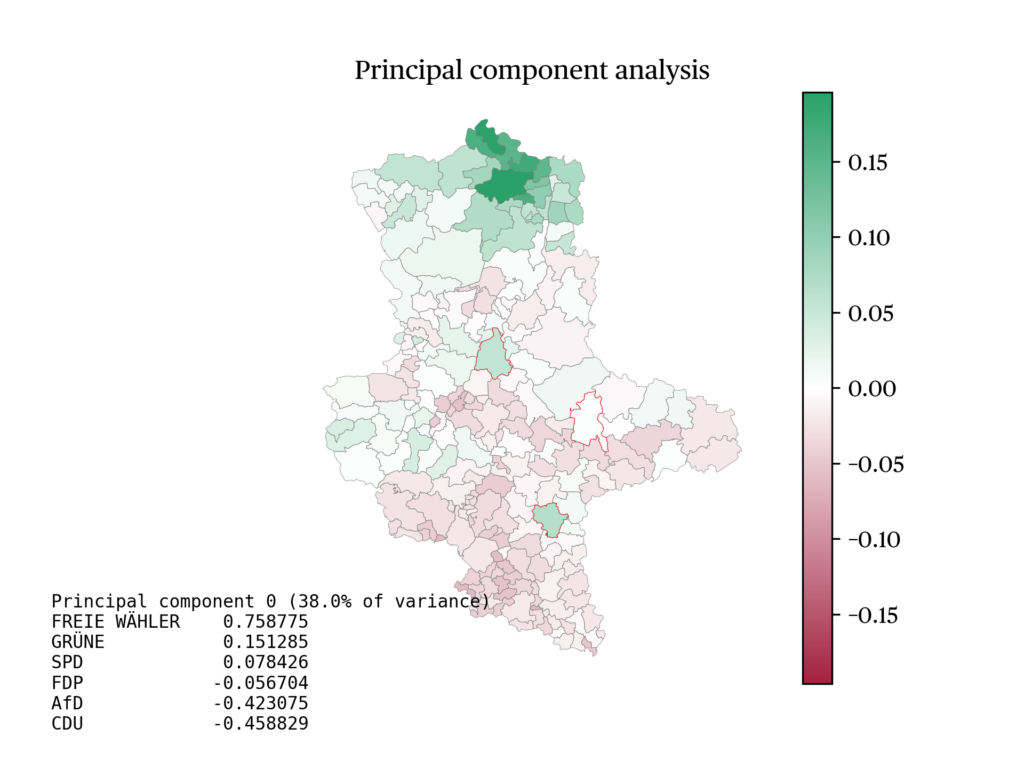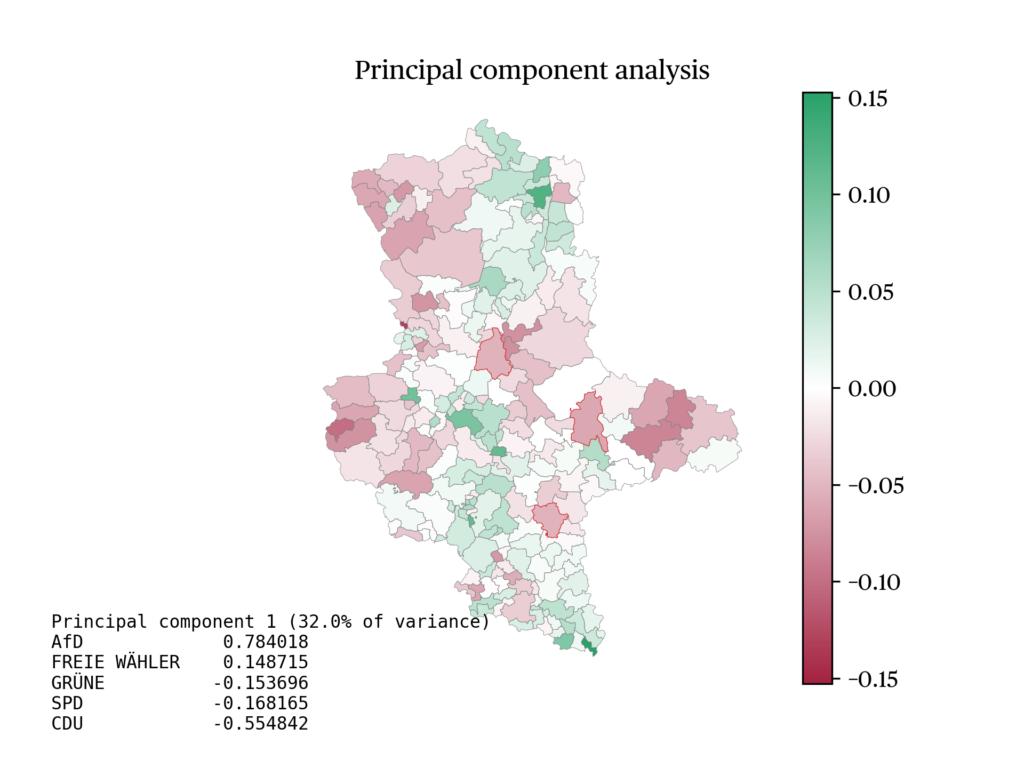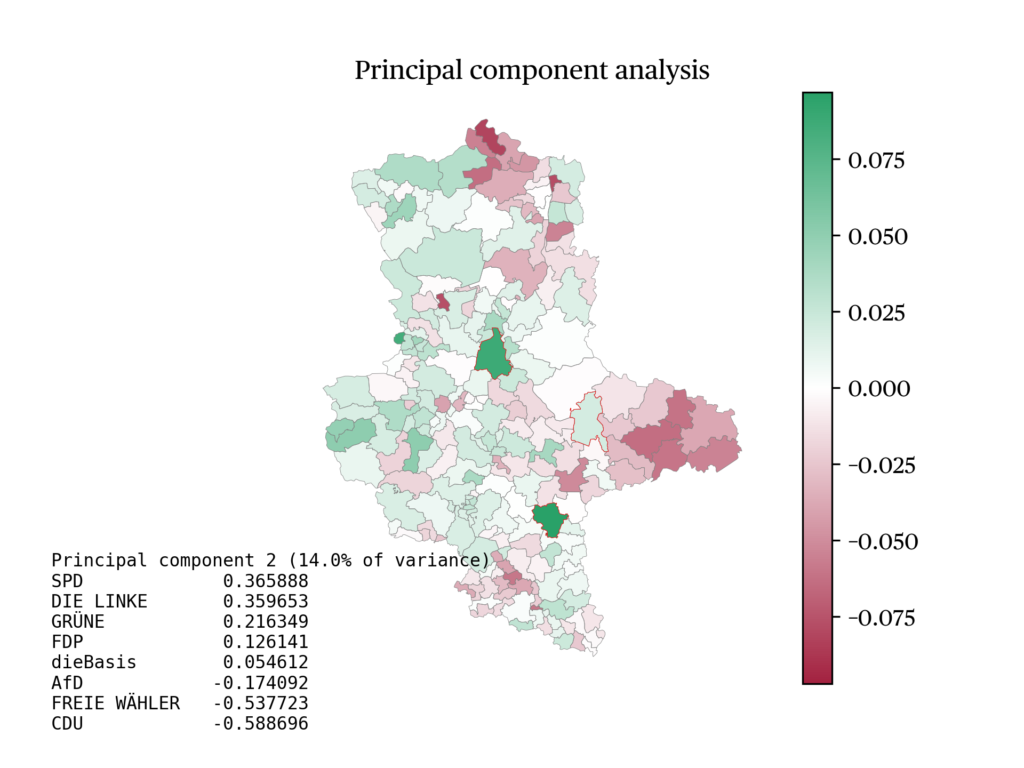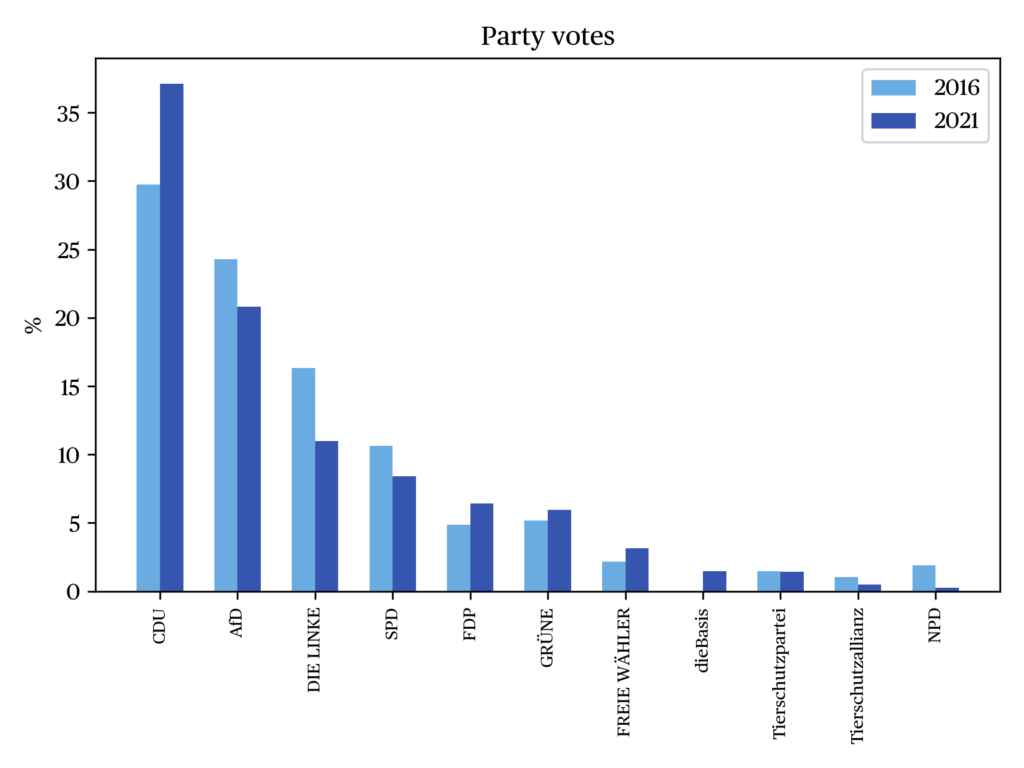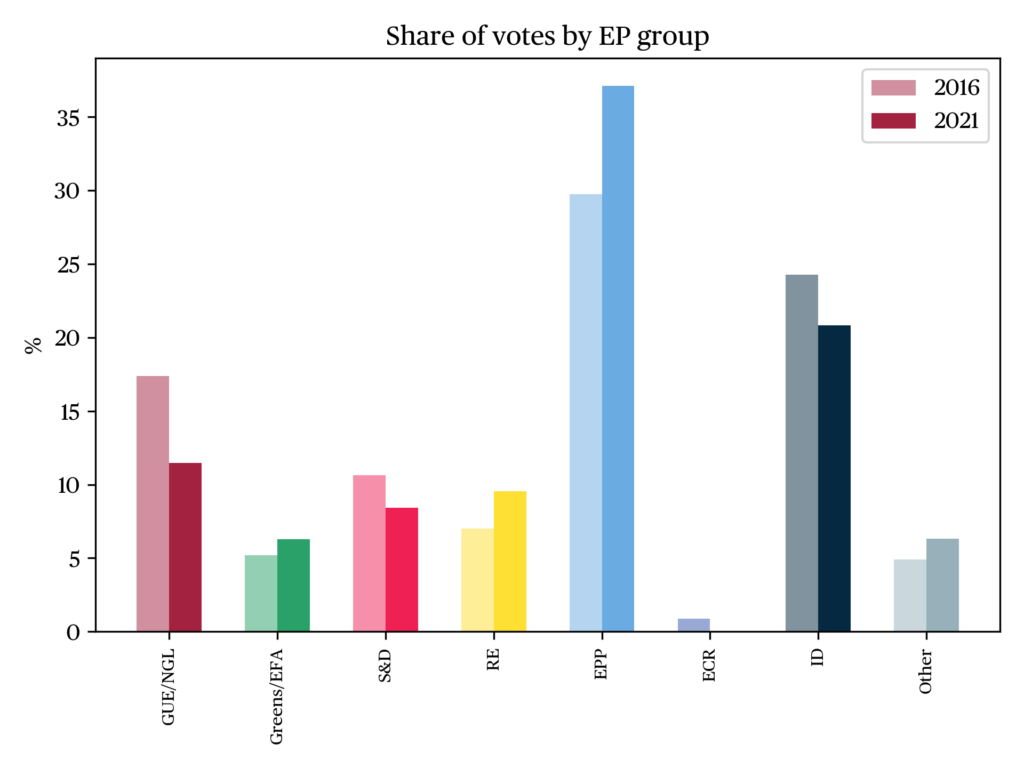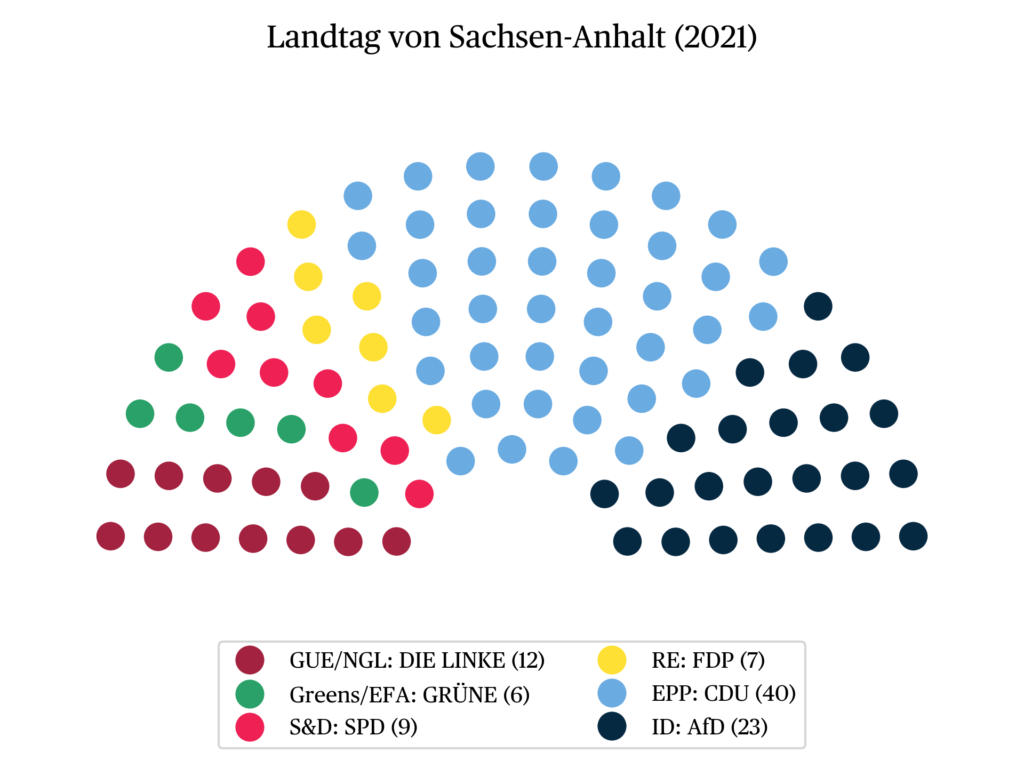Regional election in Saxony-Anhalt, 6 June 2021
Christian Stecker
Professor of Comparative Politics and German Government at Technische Universität DarmstadtIssue
Issue #2Auteurs
Christian Stecker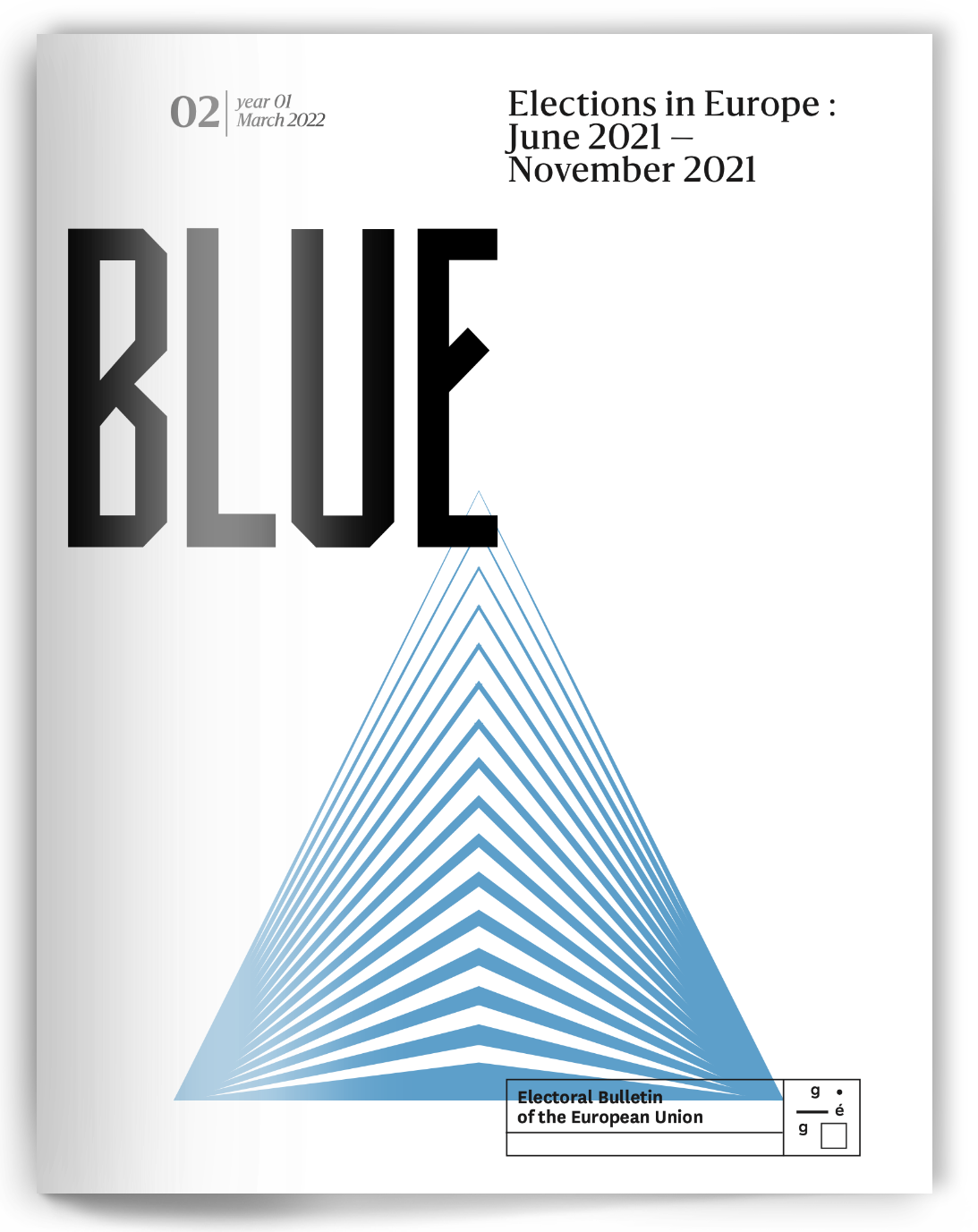
21x29,7cm - 167 pages Issue 2, March 2021 24,00€
Elections in Europe : June 2021 – November 2021
Introduction
State elections are often interpreted as “mood tests” for the federal government, especially when they take place in the year of a federal election. In fact, many state elections turn out to be infused with federal politics (Burkhart 2005; Völkl 2009). This pattern could hardly have been more clearly contradicted by the Saxony-Anhalt state elections of June 6, 2021, the last ballot at the state level before the federal election date. The elections underscored the growing inherent logic of political competition in the German states, which is increasingly characterized by popular prime ministers, distinct party systems and issues, and — in the eastern part of Germany — the confrontation with the AfD (Alternative for Germany, ID). These factors will be examined in more detail below and combined with an analysis of other aspects of the election results. Numerous empirical insights are based on survey results from infratest dimap (2021) and the Forschungsgruppe Wahlen (2021).
On the surface, the state elections were overshadowed by the approaching federal election, which would take place just under 10 weeks later, on September 26. The SPD (Social Democratic Party of Germany, S&D), led by its chancellor candidate Olaf Scholz, was languishing in the polls at 15 percent at the beginning of June 2021 and hoped to gain momentum. The Greens (Greens/EFA) believed that their popularity ratings would finally materialize in vote gains in an election in the east. For the CDU/CSU (Christian Democratic Union/Christian Social Union, EPP), Saxony-Anhalt was also seen as a mood test for their newly elected candidate for chancellor, Armin Laschet. The then CDU chairman and North Rhine-Westphalian premier had only won out over the CSU chairman, Markus Söder, in a tough power struggle at the end of April 2021. Laschet’s candidacy remained controversial, partly because Söder could not only count on greater popular support for himself, but was also backed by relevant sections of the CDU, especially in the east. Haseloff himself had clearly placed himself in Söder’s favor. A resounding defeat for the CDU/CSU, some political observers expected, would once again put on the agenda the issue of the chancellor candidate.
Taking off the federal political glasses, state political factors quickly stand out that would have later proved decisive. On the one hand, the great popularity of the Minister President, Reiner Haseloff. Haseloff, a CDU member since GDR times, first joined the state government in 2002 under Minister President Wolfang Böhmer (CDU) as state secretary. He led the CDU as the top candidate in the 2011 state election campaign and achieved a result that was well above the national trend. In April 2011, he was elected as the new minister president of a grand coalition of CDU and SPD. The fact that (mathematically) 10 coalition deputies refused to follow him at the investiture was to play a role again 10 years later. When the grand coalition lost its majority in the 2016 elections (Holtmann and Völkl 2016), Haseloff dared a political experiment: He forged the first so-called Kenya coalition in Germany — a combination of CDU, SPD and Greens. This is particularly remarkable because in Saxony-Anhalt a decidedly conservative CDU state association meets a pronouncedly progressive state association of the Greens. Disputes within the coalition were therefore inevitable. Saxony-Anhalt’s farmers, who are particularly influential in the state CDU, suddenly had to tolerate a Green environment and agriculture minister, and the Greens had to live with a CDU hardliner, Holger Stahlknecht, in the interior ministry. The German weekly newspaper SPIEGEL wrote about Germany’s largest alliance of disputes, and they often went dangerously close to breaking off the coalition prematurely. As a result, Magdeburg’s state parliament was repeatedly the focus of attention nationwide. The coalition dispute, which almost escalated six months before the state election over the issue of broadcasting fees, was joined by the omnipresent question of how exactly the CDU would deal with the AfD (Höhne 2020). Parts of the CDU did not seem averse to cooperating with the AfD, which, despite the particularly radical profile of its Saxony-Anhalt section, had swept into the state parliament in 2016 with 24.3 percent.
The Kenya coalition achieved only average satisfaction ratings. About half of the population was satisfied with its work, according to surveys. Haseloff’s own approval rating — and this is an important explanation of the subsequent election result — far outstripped that of his coalition. In pre-electoral polls, 70 percent of voters saw him as a “good” prime minister. Haseloff shares this positive image with other popular prime ministers such as Bodo Ramelow (The Left, GUE/NGL) from Thuringia or Michael Kretschmer (CDU) from Saxony, and he was only just outstripped by Winfried Kretschmann (Greens) from Baden-Württemberg (75 percent approval). No popularity ratings are available for the other top candidates in Saxony-Anhalt, especially Katja Pähle of the SPD — notably because they were so little known that no such ratings could be derived. The high popularity and name recognition ratings made it extremely difficult for Haseloff’s challengers to set a point of attack.
In addition to Haseloff’s person, the question — particularly important in East Germany — of how to deal with the AfD was to play a decisive role in the outcome of the election. The days leading up to the election were largely dominated by the media’s coverage of a neck-and-neck race between the CDU and the AfD. An INSA poll published in the BILD newspaper two days before the state election saw the AfD at 26 percent and the CDU at 27 percent. Saxony-Anhalt thus threatened to become the first state in which the AfD could become the strongest force in a state parliament. Haseloff’s challengers from the SPD — The Left and the Greens — also framed the state election as a democracy issue, insinuating that the CDU/CSU in the state was not a credible bulwark against the AfD and that citizens could well awake to a black-blue coalition after Election Day. A large majority of the population and also of CDU supporters were against any cooperation between the CDU and the AfD.
Nevertheless, the challengers’ framing of the election in terms of democractic quality was probably a strategic mistake. Not only did it draw even more attention to the horse race between the AfD and the CDU. Haseloff himself had also answered the Gretchen question so clearly and convincingly that hardly any voter doubted that cooperation with the AfD was out of the question for Haseloff. Haseloff and the state chairman Sven Schulze had clearly ruled out any cooperation with the AfD. Moreover, Haseloff had fired his Interior Minister Holger Stahlknecht only six months before the election, when the latter hinted that a CDU minority government could also be tolerated by the AfD after the upcoming election. In the final spurt of the election campaign, Haseloff styled himself as the personified firewall against the AfD, calling his state CDU the “guarantor of this democracy here in Saxony-Anhalt.” Even if this cannot be clearly proven empirically, it can be assumed that a relevant number of voters who would rather have voted Green, SPD or The Left gave their vote to the CDU in order to prevent the AfD from becoming the strongest force.
These two important background conditions of the election were by no means typical only for Saxony-Anhalt. The increasing personalization around the person of the minister presidents could also be observed in the same year in the state elections in Baden-Württemberg and Rhineland-Palatinate. The horse-race effect is again primarily an East German phenomenon. Bodo Ramelow’s success in the Thuringian state elections in 2019, for example, can also be better understood in this light.
Results and changes in election results
Saxony-Anhalt mirrors in important parts the personalized proportional representation system practiced at the federal level (Massicotte 2003). Voters cast two votes. The first vote is awarded to a direct candidate in the total of 41 constituencies. Analogous to the first-past-the-post system, the mandate is won by the candidate who receives most votes in the constituency. The second vote is used to elect a closed party list. All parties that win at least 5 percent of the electoral votes nationwide participate in the distribution of mandates. A party’s share of the second vote is decisive in calculating the total number of seats it is entitled to, in order to ensure the greatest possible proportionality. The electoral system in Saxony-Anhalt is therefore a compensatory mixed electoral system (Shugart and Wattenberg 2003).
The results of the state elections were a big surprise. With an increase of 7.4 percentage points compared to 2016, the CDU was seen in the media reception as a radiant election winner. With 20.8 percent, the AfD was clearly distanced. The Left suffered heavy losses, falling to 11.0 percent. With 8.4 percent of the second votes, the SPD lost 2.2 percentage points compared to the state election of 2016. The long-term losses of both parties are dramatic – in 1998, the SPD had still brought in 36 percent and The Left’s predecessor PDS (Party of Democratic Socialism) 20 percent. Despite slight gains of 0.8 percent, the state Greens’ 5.9 percent was a bitter disappointment. At the same time, the federal Greens ranked at around 22 percent in the polls. The FDP (Free Democratic Party, RE) returned to the Magdeburg state parliament for the first time since 2011 with 6.4 percent of the vote. The Free Voters (FW, RE), recruited mainly from disappointed former CDU politicians, fell well short of the 5 percent hurdle with 3.1 percent. Voter turnout was 60 percent, roughly the same level as in 2016.
The map of the constituency winners was almost entirely black. The CDU won 40 direct mandates, conceding only one to the AfD in Zeitz, which borders Saxony. In 2016, the AfD had won 15 direct mandates.
Media coverage of the election results focused primarily on the election winner Reiner Haseloff. In a photo montage, the left-liberal newspaper taz placed Haseloff’s head on the body of Baywatch star David Hasselhoff in a lifeguard outfit and ran the headline “Der Retter der CDU” (The Savior of the CDU). This title was also a reverence to the many journalists and politicians (mostly of West German provenance) who pronounced the Wittenberger’s surname harshly and incorrectly like the U.S. actor’s last name. The role of the demoscopes was critically discussed; after all, in retrospect, the INSA poll seemed to have staged a horse race that had little to do with reality.
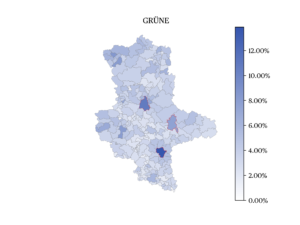
Which key issues determined the vote decision?
It is an insight of political science that not only persons and positions play an important role in elections. The importance of specific topics is also significant (Bräuninger et al. 2020; Meguid 2008). Parties can benefit from this if they are seen as competent on the issues that are particularly important to citizens. Admittedly, the issue agenda can only be manipulated by parties to a limited extent and is often subject to external influences (e.g., Coronavirus).
Since reunification, state elections in the eastern German states have been characterized by a conflict over the perceived disadvantage of the east. Objective and subjective indicators suggest that the disadvantage consists, among other things, of still lower pensions and wages, but also of the low representation of East Germans in leadership positions (Vogel 2020). Indeed, 74 percent of voters agreed with the statement that “East Germans are still second-class citizens in many places.” Thus, it added to Haseloff’s approval rates that he was also perceived by 65 percent of citizens as a self-confident advocate of East German interests.
A look at the issue priorities in vote decisions makes it clear that the political framework conditions in the eastern German state of Saxony-Anhalt are completely different from those in the west – and this peculiarity was to work primarily to the disadvantage of the Greens. The issues of social security, economy and education were decisive for over 70 percent of respondents, while the environment and climate only came in fourth place with 8 percent. In the state elections in Baden-Württemberg and Rhineland-Palatinate in March of the same year, more than twice as many respondents saw the environmental issue in the lead. Admittedly, the issue shaping the voting decision differed between supporters of different parties. Unsurprisingly, the environmental issue dominated for Green voters, while for AfD voters migration and integration were the main deciding factors.
The state Greens failed to raise the issue of climate change to the extent that it had contributed to their polling high at the federal level. A debate initiated by the federal Greens about raising the price of gasoline came at an inopportune time, since an above-average number of people in Saxony-Anhalt commute longer distances to work by car. Ironically, the long-standing official advertising slogan for the state, “Wir stehen früher auf” (“We get up earlier”), was based on a survey that pinpointed the commute-related early bedtime habits of Saxony-Anhalt residents.
Interestingly, the handling of Covid-19 played a decisive role for only six percent of citizens. The state elections took place during a period of relative relaxation of the Covid-19 incidence, and numerous restrictions had since been lifted. This probably also provides a partial explanation for the poor result for the AfD, which tried to distinguish itself primarily by criticizing the Corona measures of the state and federal governments.
In terms of perceived party competence (Forschungsgruppe Wahlen 2021), the CDU was clearly in the lead on all relevant issues. Only in climate policy were the Greens ahead of the CDU/CSU with 30 versus 19 percent, which for the reasons mentioned above was not reflected in the vote shares. In foreign policy, too, 27 percent attributed the greatest competence to the CDU/CSU and only 19 percent to the AfD. This may also have contributed to the AfD’s limited success with its decidedly nativist agenda (Pesthy, Mader, and Schoen 2021). However, it should be noted that attributions of competence are highly correlated with party identification and voting intention, suggesting that citizens have only limited ability to assess the competence of parties in specific areas of political competition.
Geographic trends
Compared with western German states such as Baden-Württemberg or Hesse, Saxony-Anhalt’s sociodemographic variance is significantly lower. Nevertheless, a spatial analysis of the election results reveals various trends that are familiar in the field of electoral research. For example, the CDU and, by some margin, the AfD were particularly successful in rural areas, which characterize a large part of the state. In the urban centers, the Greens were able to achieve well above-average results. In Halle, the most important city in the state, the Greens won almost 14 percent of the second votes and fell short of obtaining a direct mandate in one constituency there. Unfortunately for the Greens, however, only about 20 percent of Saxony-Anhalt residents live in urban centers.
A principal component analysis of voting behavior shows that, alongside the Greens, the SPD, the left-wing party and the FDP also enjoyed above-average success in urban areas. Specifically, the principal component analysis quantifies that 14 percent of the vote differences between municipalities can be explained primarily by the support for these parties in cities.
Government and coalition formation
As the clear winner of the election, Haseloff’s role was to form the next state government of Saxony-Anhalt. The distribution of seats suggested an obvious solution (coalition) – theoretically: CDU and SPD together controlled exactly an absolute majority of 49 votes in the Magdeburg state parliament and could have formed a minimum-win coalition accordingly. Minimal-win coalitions, i.e., coalitions in which no party is involved that would not be necessary for an absolute majority (Müller and Strøm 2006), are the standard model in Germany at the federal and state levels (Bräuninger et al. 2019). Minority governments (Klecha 2010) or supermajority coalitions are an absolute rarity. Governing even with razor-thin majorities is not uncommon and could be observed at the same time, for example, in the black-yellow coalition led by Armin Laschet in North Rhine-Westphalia, Germany’s most populous state. In practice, however, this one-vote majority seemed too shaky to Haseloff.
Haseloff could not be sure of the absolute unity of his CDU faction for various reasons. There were at least three deputies in the new parliamentary group who could have had at least one reason for refusing to follow him. For example, two members of the state parliament, Ulrich Thomas and Lars-Jörn Zimmer, were demoted from faction vice presidents to ordinary deputies after the election, in part because they had on different occasions shown a closeness to the AfD. Haseloff’s shamed crown prince, Holger Stahlknecht, had returned to the Magdeburg state parliament with a very good constituency result. In addition, there was an indeterminable number of CDU deputies who only grudgingly supported the course of demarcation from the AfD.
Haseloff’s main concern was the election of the state premier. This election takes place by secret ballot — which raises various issues in terms of democratic theory (Decker 2020) and most recently caused a scandal in Thuringia with the election of a short-term prime minister from the FDP with votes from the AfD (Debes 2021). In secret ballots, dissenters are not identifiable and, freed from transparency, could pursue different aims in casting their votes. After the election, it would be easier to establish a closed parliamentary group. In everyday parliamentary life, votes are cast visibly (by a show of hands or standing up or staying seated) (Stecker 2015), and any MP who did not remain loyal to the “savior of the CDU” would have had to present very convincing arguments for this.
Presumably for these reasons, Haseloff sought a larger parliamentary majority for his new government. The CDU explored other possible constellations with the SPD, FDP and Greens. The choice included a continuation of the Kenya coalition with the SPD and the Greens with a majority of six votes. However, this was hardly acceptable to the conservative sections of the CDU in particular, and Kenya was also one of the most unpopular constellations among the population. The same picture applied to a theoretically possible Jamaica coalition of the CDU, FDP and Greens. The Greens themselves also ruled out joining a coalition as a mathematically unnecessary partner.
Thus, Saxony-Anhalt once again provided the stage for a new coalition — a combination of CDU, SPD and FDP, which was also referred to in the media as the “Germany coalition”. The unusual feature of this coalition is that the FDP is not actually necessary to achieve an absolute majority, resulting in an outsized coalition. This had last occurred at the state level in the 1950s.
On September 16, 2021, the state parliament proceeded to elect the prime minister. The first ballot would have confirmed Haseloff’s fears. He fell short of the necessary majority, with only 48 deputies voting for him, although the coalition overall assembled 56 deputies. In the second ballot, however, Haseloff was re-elected to the office of prime minister with 53 votes. Along with the prime minister, the new black-red-yellow government consists of six ministers from the CDU, two from the SPD and one from the FDP.
On the surface, the state election had some implications for the federal level. Armin Laschet’s candidacy for chancellor appeared stabilized by Haseloff’s brilliant election victory, and the CDU at that point looked poised to win the federal election. Barely three months later, the federal election virtually reversed the voting patterns in Saxony-Anhalt. With 25.4 percent of the vote, the SPD relegated the CDU (21 percent) and the AfD (19.6 percent) to second and third place in Saxony-Anhalt. From this perspective, the state elections of June 6, 2021 in Saxony-Anhalt may be considered clearly dominated by regional state politics.
Literature
Bräuninger, T., Debus, M., Müller, J. & Stecker, C. (2019). Party Competition and Government Formation in Germany: Business as Usual or New Patterns? German Politics 28 (1), pp. 80–100.
——— (2020). Parteienwettbewerb in den deutschen Bundesländern. Wiesbaden: Springer Fachmedien Wiesbaden.
Burkhart, S. (2005). Parteipolitikverflechtung. Über den Einfluss der Bundespolitik auf Landtagswahlentscheidungen von 1976-2000. Politische Vierteljahresschrift 46 (1), pp. 14–38.
Debes, M. (2021). Demokratie unter Schock: Wie die AfD einen Ministerpräsidenten wählte. Essen: Klartext.
Decker, F. (2020, 9 February). Geheime Abstimmung – Ein sehr alter Zopf. Süddeutsche Zeitung, Online.
Forschungsgruppe Wahlen (2021). Landtagswahl in Sachsen-Anhalt. Online.
Höhne, B. (2020). Grenzen des Demokratielabors. Wie wahrscheinlich ist eine Parlamentskooperation von CDU und AfD in Ostdeutschland? GWP – Gesellschaft, Wirtschaft, Politik 69 (2-2020), pp. 157–68.
Holtmann, E. & Völkl, K. (2016). Die sachsen-anhaltische Landtagswahl vom 13. März 2016: Eingetrübte Grundstimmung, umgeschichtete Machtverhältnisse. ZParl Zeitschrift für Parlamentsfragen 47 (3), pp. 541–60.
Infratest-dimap (2021, 29 September). Landtagswahl Sachsen-Anhalt 2021. Online.
Klecha, S. (2010). Minderheitsregierungen in Deutschland. Hannover: Friedrich-Ebert-Stiftung Landesbüro Niedersachsen.
Lehmann, T. (2021, 3 June). Deutschlands größtes Streitbündnis, SPIEGEL. Online.
Massicotte, L. (2003). To create or to copy? electoral systems in the German Länder. German Politics 12 (1), pp. 1–22.
Meguid, B. M. (2008). Party competition between unequals: Strategies and electoral fortunes in Western Europe. Cambridge studies in comparative politics. Cambridge: Cambridge University Press.
Pesthy, M., Mader, M. & Schoen, H. (2021). Why Is the AfD so Successful in Eastern Germany? An Analysis of the Ideational Foundations of the AfD Vote in the 2017 Federal Election. Politische Vierteljahresschrift 62 (1), pp. 69–91. Online.
Shugart, M. S. & Wattenberg, M. P. (éds) (2003). Mixed-member electoral systems: The best of both worlds? Comparative politics. Oxford: Oxford University Press.
Stecker, C. (2015). How effects on party unity vary across votes. Party Politics 21 (5), pp. 791–802.
Tagesspiegel (2021, 6 juin). Habeck räumt Fehler im Wahlkampf ein. Der Tagesspiegel. Online.
Vogel, L. (2020, 1er octobre). Der geringe Anteil Ostdeutscher in den Eliten — ein verkanntes Problem. Regierungsforschung. Online.
Völkl, K. (2009). Der Einfluss der Bundespolitik auf die Stimmabgabe der Bürger bei Landtagswahlen unter besonderer Berücksichtigung der Stärke der Parteibindung. In Gabriel, O. W., Weßels, B. & Falter, J. W., Wahlen und Wähler: Analysen aus Anlass der Bundestagswahl 2005, eds. Oscar W. Gabriel. Wiesbaden: VS Verlag für Sozialwissenschaften, pp. 421–56.
citer l'article
Christian Stecker, Regional election in Saxony-Anhalt, 6 June 2021, Mar 2022, 21-27.
à lire dans cette issue
voir toute la revue






